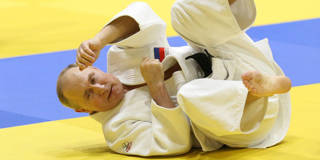Putin's Ukraine Quagmire
Russian President Vladimir Putin has sought to throw the United States and its NATO allies off balance by mobilizing Russian troops on Ukraine’s border. But this manufactured crisis is likely to leave Russia facing new sanctions, a stronger NATO, and a neighbor whose people have developed a more separate, anti-Russian identity.

NEW YORK – Russian President Vladimir Putin regularly showcases his skills in judo and other martial arts. Success in these sports often depends on what the Japanese call kuzushi –unbalancing one’s opponent by employing techniques designed to disrupt their physical and mental equilibrium.